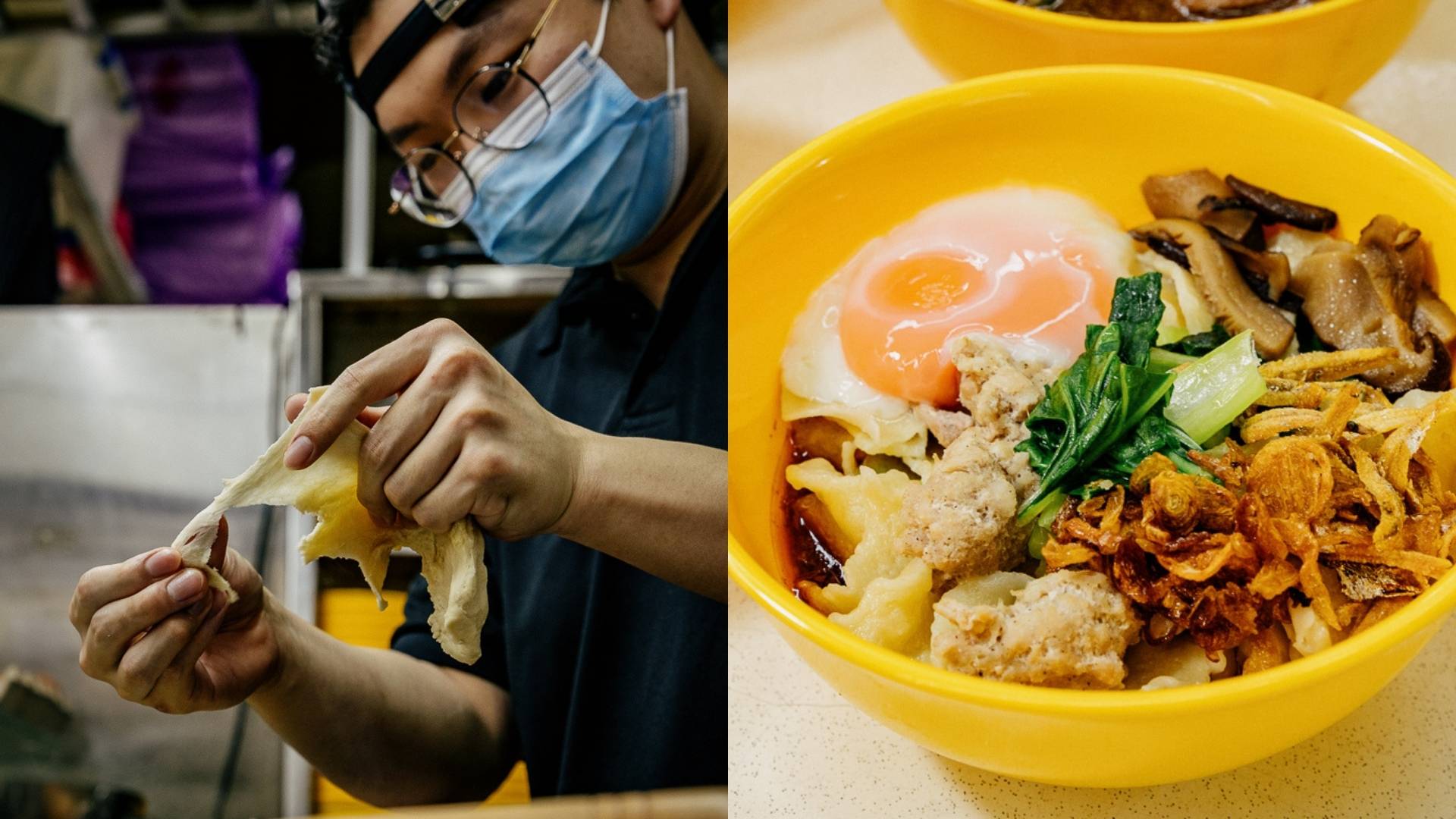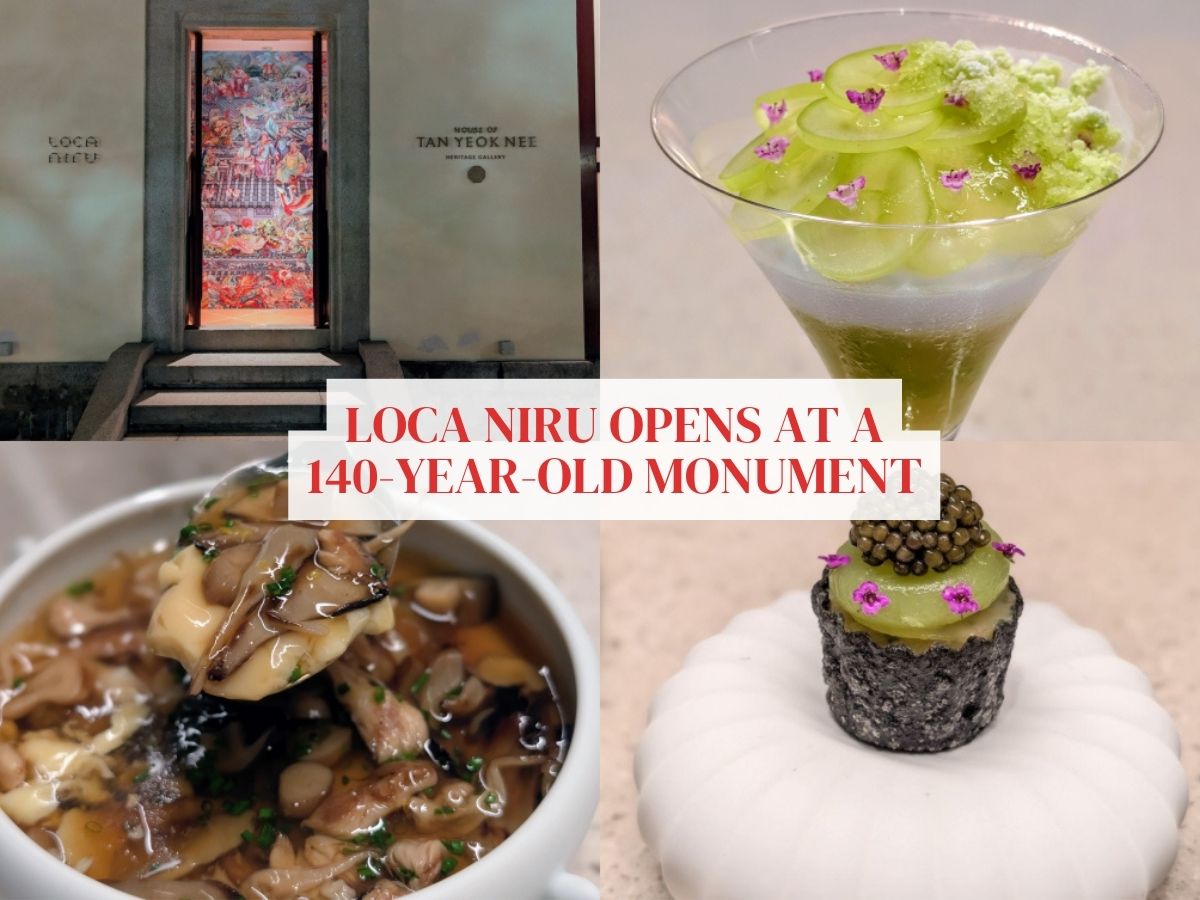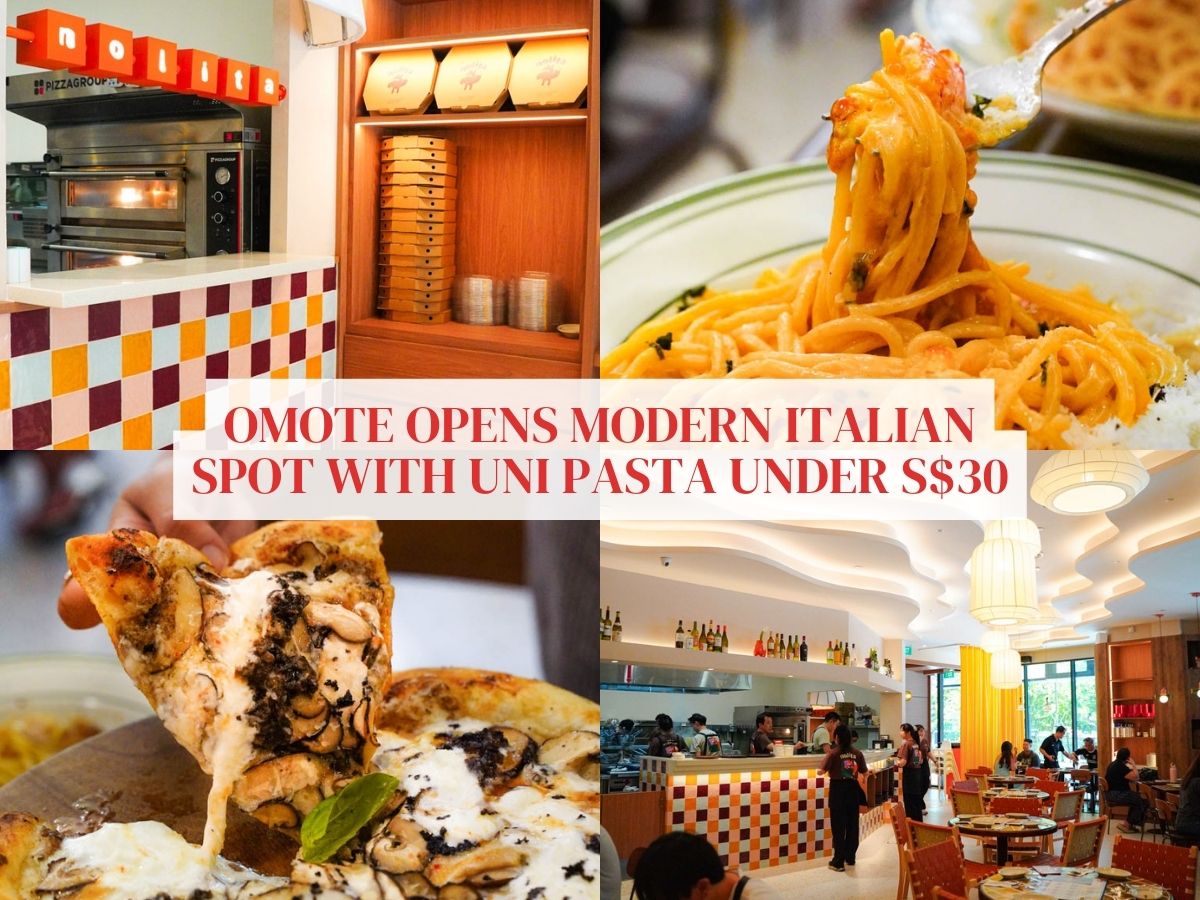Legacy Ban Mian: Two young hawkers and the dying art of tearing mee hoon kueh by hand
- Located in Kallang, Legacy Ban Mian is the brainchild of two young hawkers, cousins Ashley Tan and Xavier Tan.
- Having learnt the ropes from Xavier’s parents, the duo tear up to 10kg of mee hoon kueh by hand every day.
- Menu highlights include the dry mee hoon kueh and herbal pork mee sua.
Cousins Ashley Tan, 34, and Xavier Tan, 25, are part of a growing wave of young hawkers putting their own stamp on a time-honoured tradition.
In early May 2025, the pair opened Legacy Ban Mian in a non-descript coffee shop in Geylang, situated less than five minutes away from Kallang MRT station. Their stall specialises in handmade noodles, served either in a savoury soup or tossed dry in punchy dark sauce. And its name is a nod to their heritage; they are, after all, second-generation hawkers carrying forward the recipes passed down by their family.
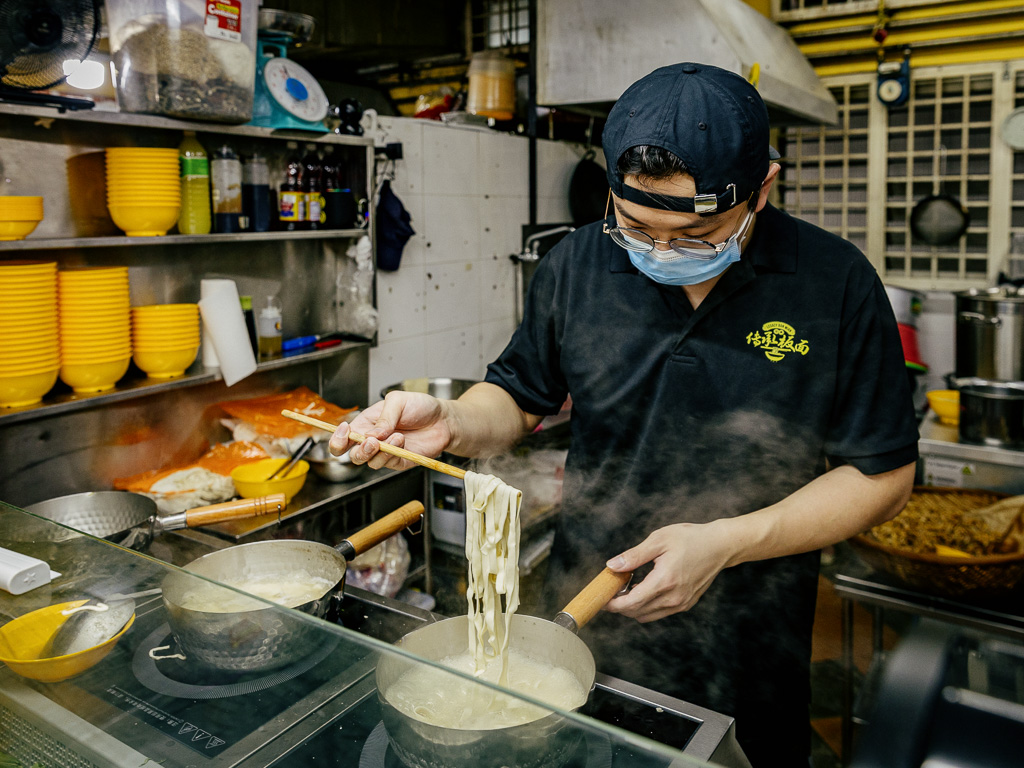
Gen-Z hawker Xavier grew up around noodles. His parents run Sheng Wang Handmade Noodles, a ban mian stall in Pasir Ris, where he learnt the ropes from a young age. His millennial cousin Ashley, who often ate the family’s food, eventually picked up the skills as well.
The cousins took different paths, before deciding to venture into hawker life. Both worked various jobs in their 20s, though they prefer not to share specifics. What they do say, however, is that the pandemic years made them rethink what they really wanted. When they finally told their parents about setting their own hawker business on their own, support came swiftly.

“My parents were encouraging when we brought up the idea of starting our own business,” Xavier says. The Gen-Z hawker recalls his parents popping by whenever they could to help them out.
Ashley is quick to add: “They were even okay for us to use our own branding and name.”

Legacy Ban Mian is located in a unit that once sold Vietnamese pho and banh mi. The cousins spent about S$35,000 to renovate and relaunch the space.
In the kitchen, their dynamic is easy to spot. Xavier, who’s had years of practice under his belt, takes the lead during peak hours. He’s more seasoned when it comes to cooking. Ashley, who began learning the ropes just last year, is much more confident now. Even so, he says Xavier’s skills are still a step ahead.
“Xavier has had more experience,” Ashley says.

Each of them is fastidious about different things. Xavier is particular about how the noodles are made. Ashley, a father of two daughters with a son on the way in September, focuses on cleanliness and keeping the space tidy.
“We’d sometimes nag at each other,” Ashley says, with a cheeky smile. “And that is for our own good.”
Despite the occasional back-and-forth, the kitchen runs like clockwork. They’re supported by two hired staff, but the cousins remain hands-on throughout service, from preparing dough and frying the ikan bilis, to managing orders and plating each bowl.
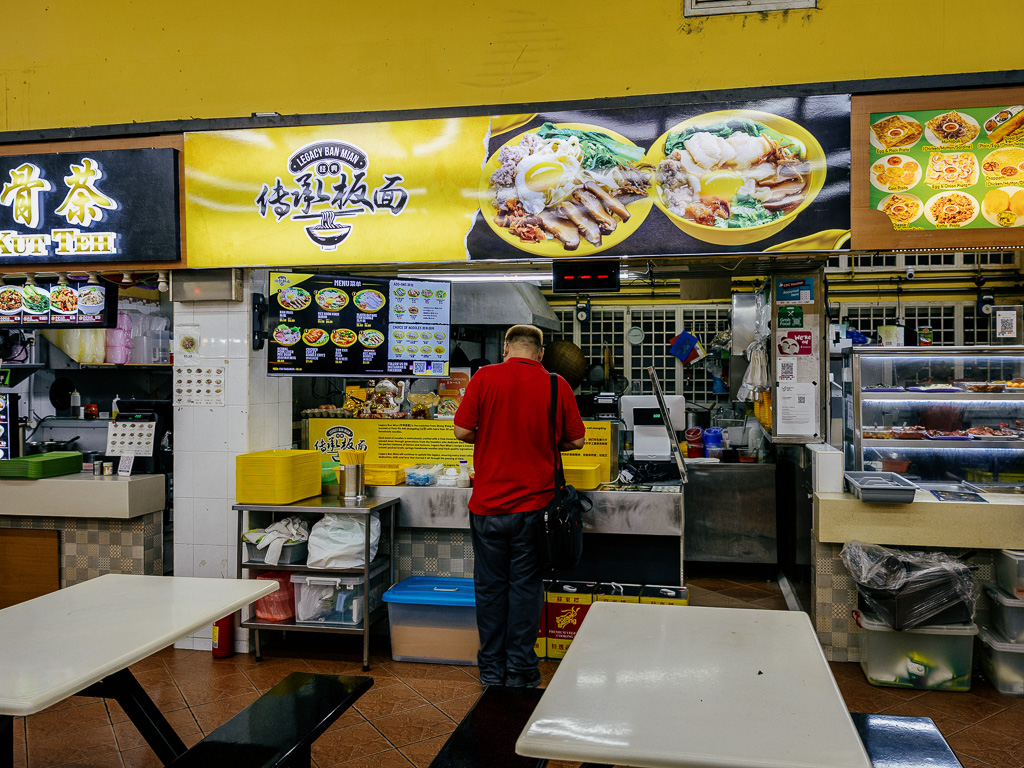
“We’re still learning and figuring things out,” Ashley says. “Marketing is part of it too. I post on our social media and try to tell our story.”
The duo also make it a point to give back to society: Senior citizens who flash their Pioneer Generation card on Mondays get to slurp down one free budget bowl ($3.50), which comprises bee hoon, three minced meat balls and some greens.
Compared to their family’s Pasir Ris stall, prices here are slightly higher, by about 50 cents. Ashley explains that it’s due to higher rent and ingredient costs, but they make it a point not to cut corners.
Hand-torn mee hoon kueh

These days, stalls that tout to sell hand-torn mee hoon kueh, a traditional local dish comprising chewy, flat noodles steeped in a light, flavourful broth, are far and few between in Singapore.
With machine-cut noodles becoming more common, the cousins are determined to keep the craft alive. But mastering the technique doesn’t come easily.

Good mee hoon kueh isn’t uniform. The appeal lies in the variety: Noodles with uneven edges and slightly different thickness give each bite a different texture. Some pieces are soft, while others have a bit more chew. That variation is what sets the hand-torn variant apart.
“A lot of it comes down to ‘feel’,” Ashley says. Learning to pinch the dough correctly, with just the right amount of pressure and stretch, takes time. Too thick, and the noodle becomes doughy. Too thin, and it loses bite.

On average, the duo pinch up to 10kg worth of mee hoon kueh dough each day.
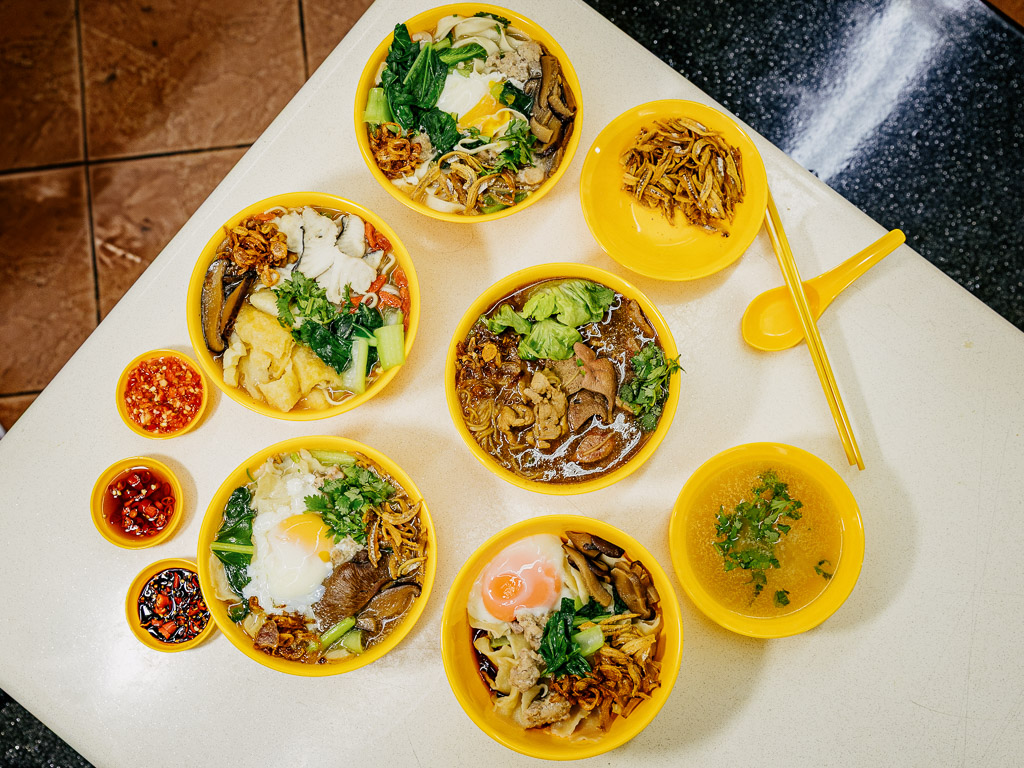
At Legacy Ban Mian, Ashley and Xavier keep things focused, but varied. The menu covers handmade noodle staples such as mee hoon kueh and ban mian, served either in soup or tossed dry. There are also a few offbeat options, such as herbal pork mee sua and sliced fish soup.
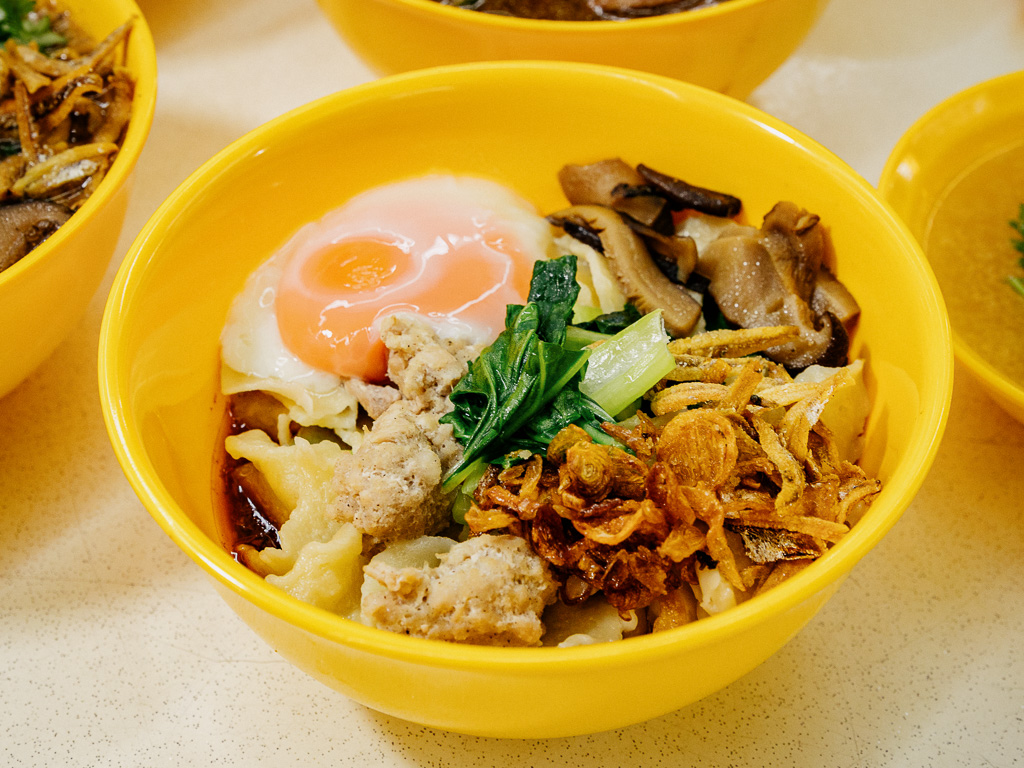
The dry mee hoon kueh (S$6) arrived in a glossy, dark sauce, topped with a few pieces of minced meat, blanched greens, fried anchovies, and a sous vide egg. The flavour leaned sweet, with a mild spice that lingered on the tongue.
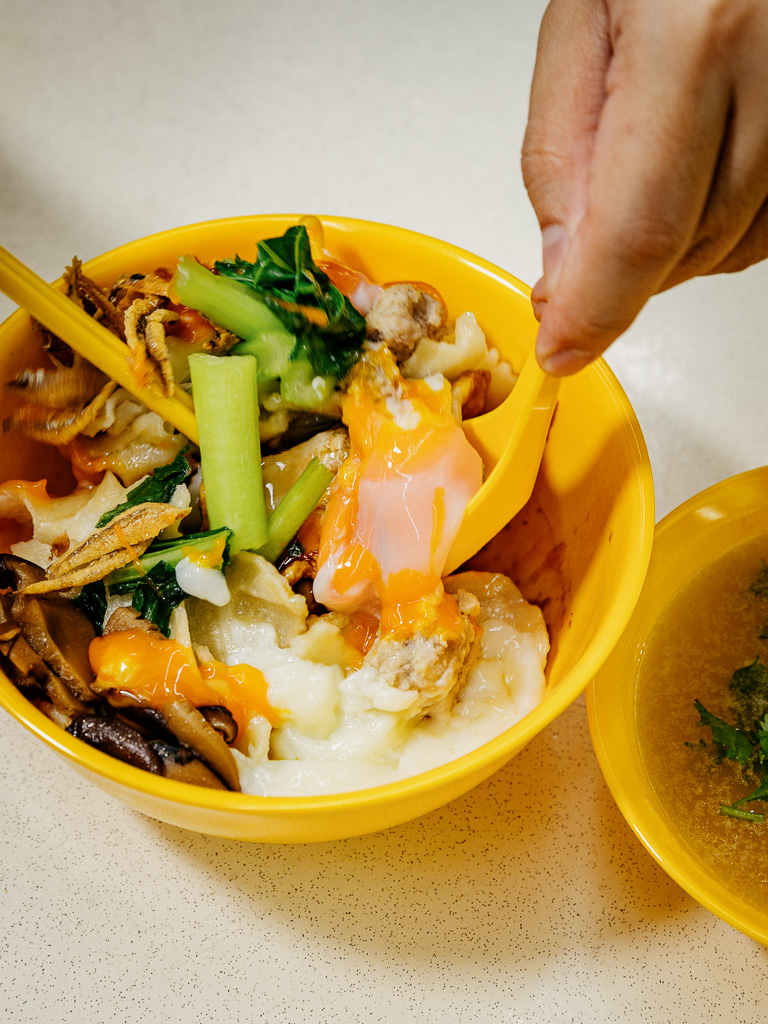
The sauce clung well to the noodles, coating every fold as I mixed up the ingredients in the bowl. What I liked most was the texture; the noodles weren’t uniformly shaped, which made for a fun and satisfying bite.
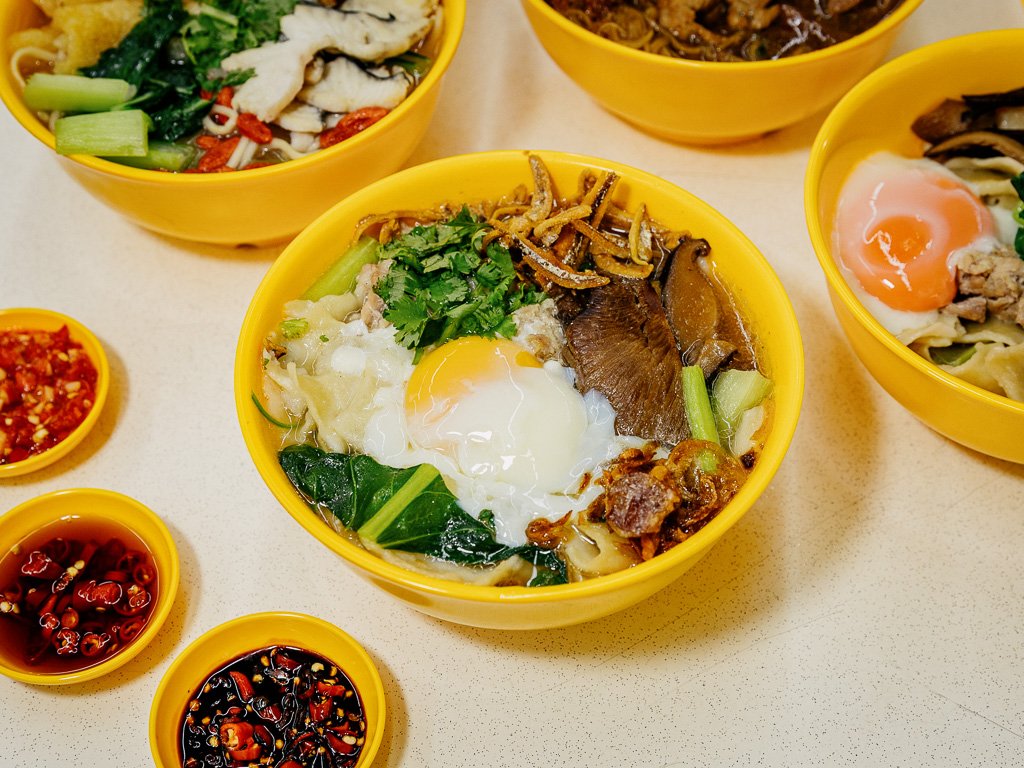
The soup mee hoon kueh (S$5.50) was the lighter option. It came with a broth that emanates a subtly sweet aroma of fried shallots. Much like its dry counterpart, it also came with blanched vegetables, minced pork, onsen egg, and crisp ikan bilis. It was warming and comforting, especially on a rainy day, though I found myself still thinking about the dry version.
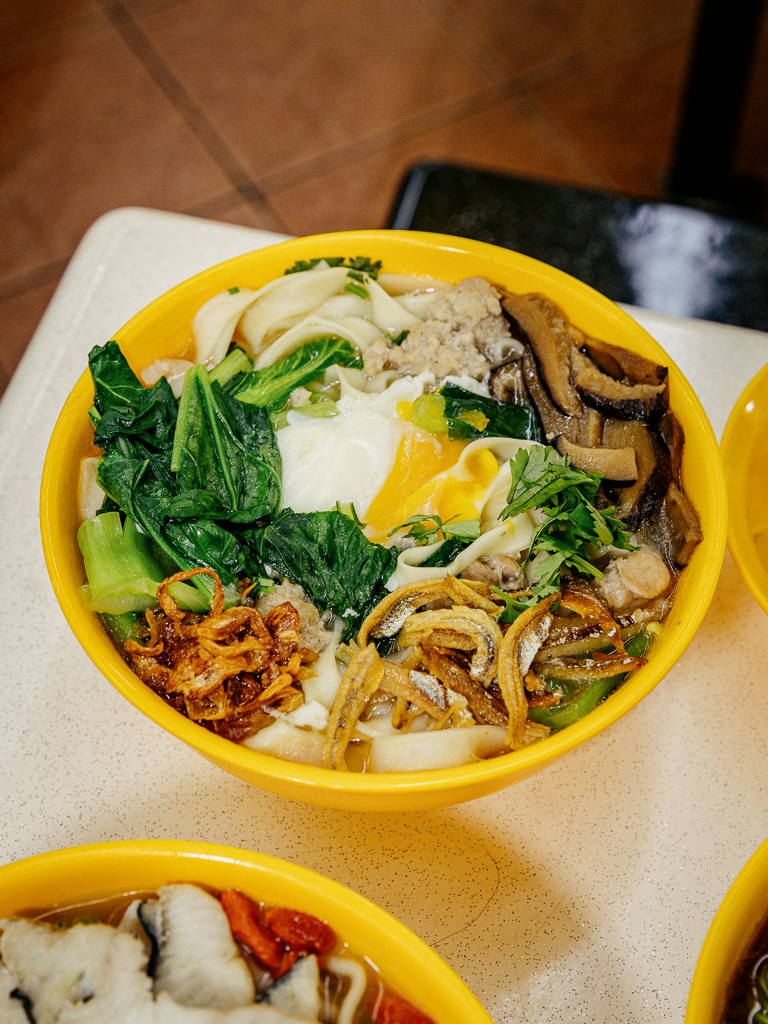
We also tried the ban mian (S$5), which uses the same soup base. The broth is savoury — we suspect concocted from a mix of pork and fish bones — but the noodles for the ban mian are mass-produced. It’s a decent bowl, but it didn’t quite stick with me the way the mee hoon kueh did.

The herbal pork noodle mee sua (S$5.50) was the most distinctive of the lot. Hearty portions of tender pork liver and lean cuts of pork came with the bowl, along with mee sua that soaked up the broth nicely.
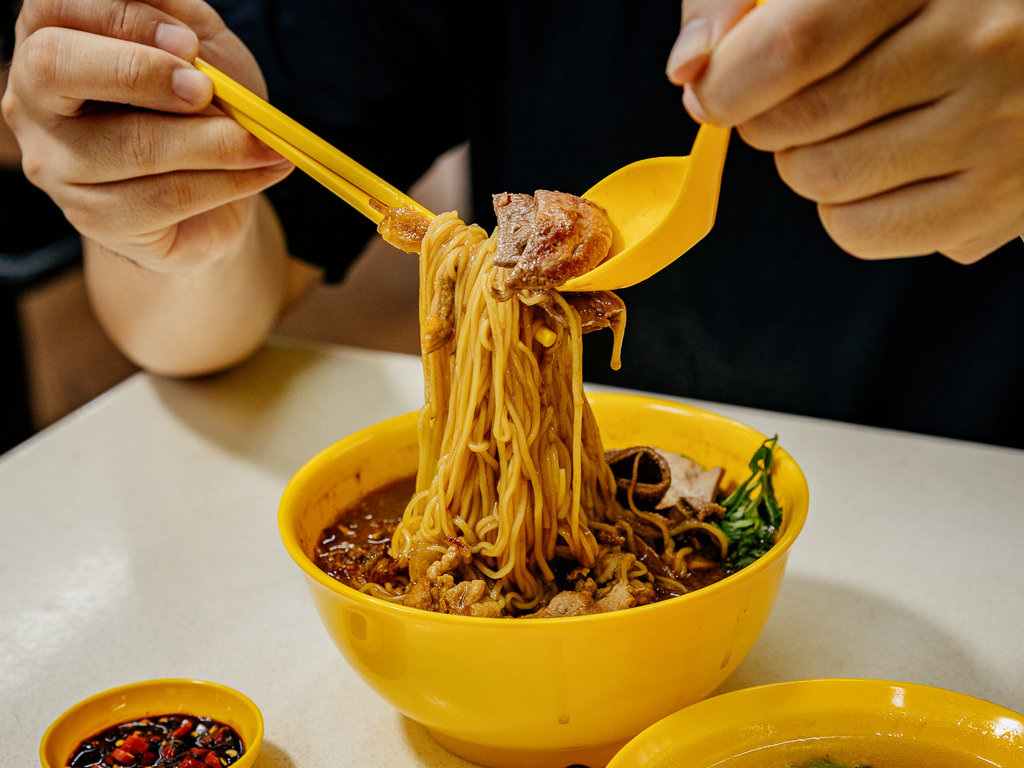
The broth reminded me of bak kut teh, but without the usual peppery heat or heavy garlic. Instead, it leaned more towards the medicinal side, with stronger notes of star anise and dang gui (angelica root). The herbal flavour built up over each spoonful, and while it was a bit much for me after a while, I could see it appealing to those who enjoy richer, old-school herbal soups.
Legacy Ban Mian delivers on what it promises: Handmade mee hoon kueh, a bit of heritage, and a younger generation trying to do things properly. If you’re in the area and craving something familiar, but made with care, this stall is worth a visit. Just come hungry.
Tue 8am - 8pm
Wed 8am - 8pm
Thurs 8am - 8pm
Fri 8am - 8pm
Sat 8am - 8pm
Sun 8am - 8pm
- Kallang
